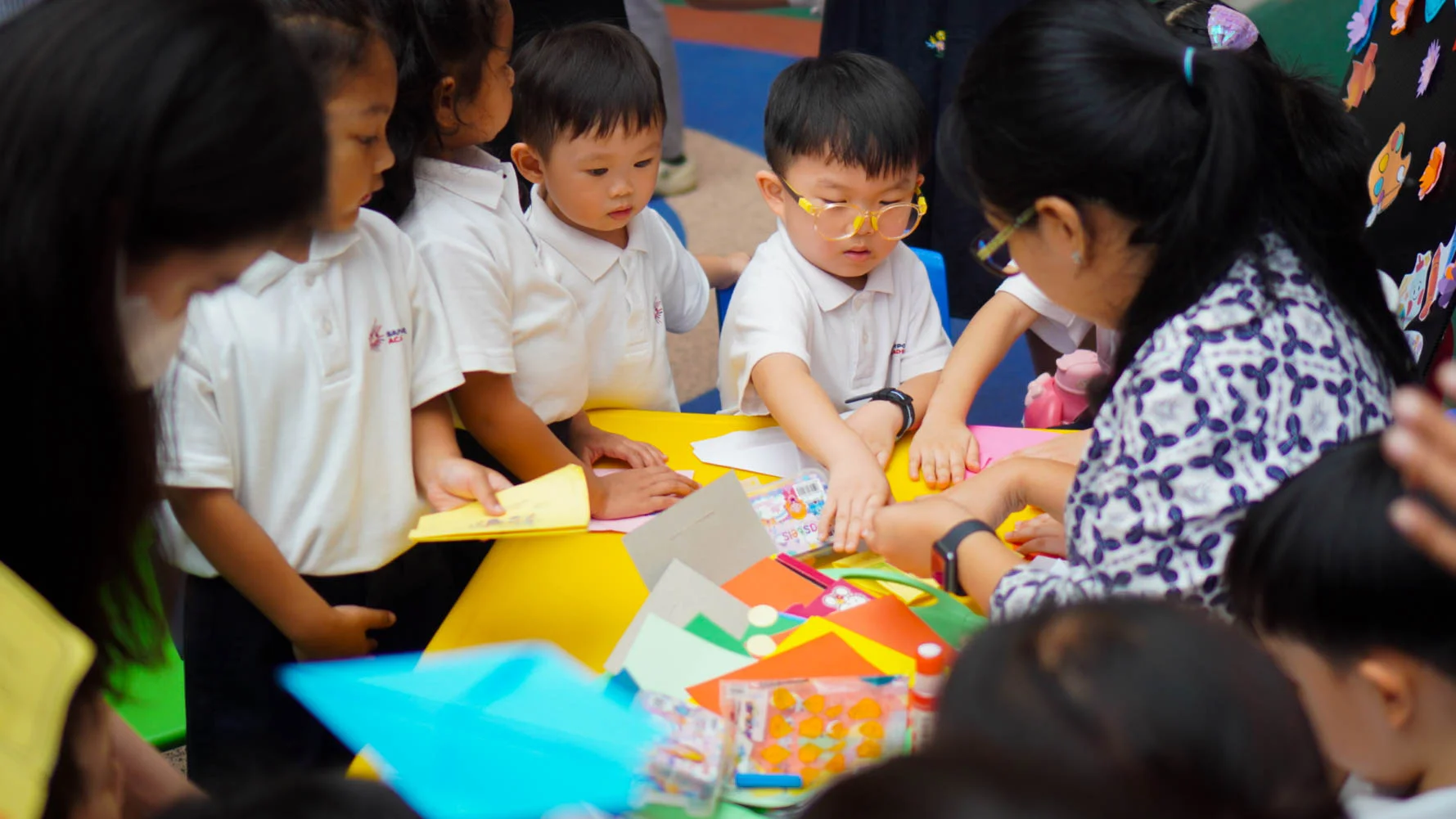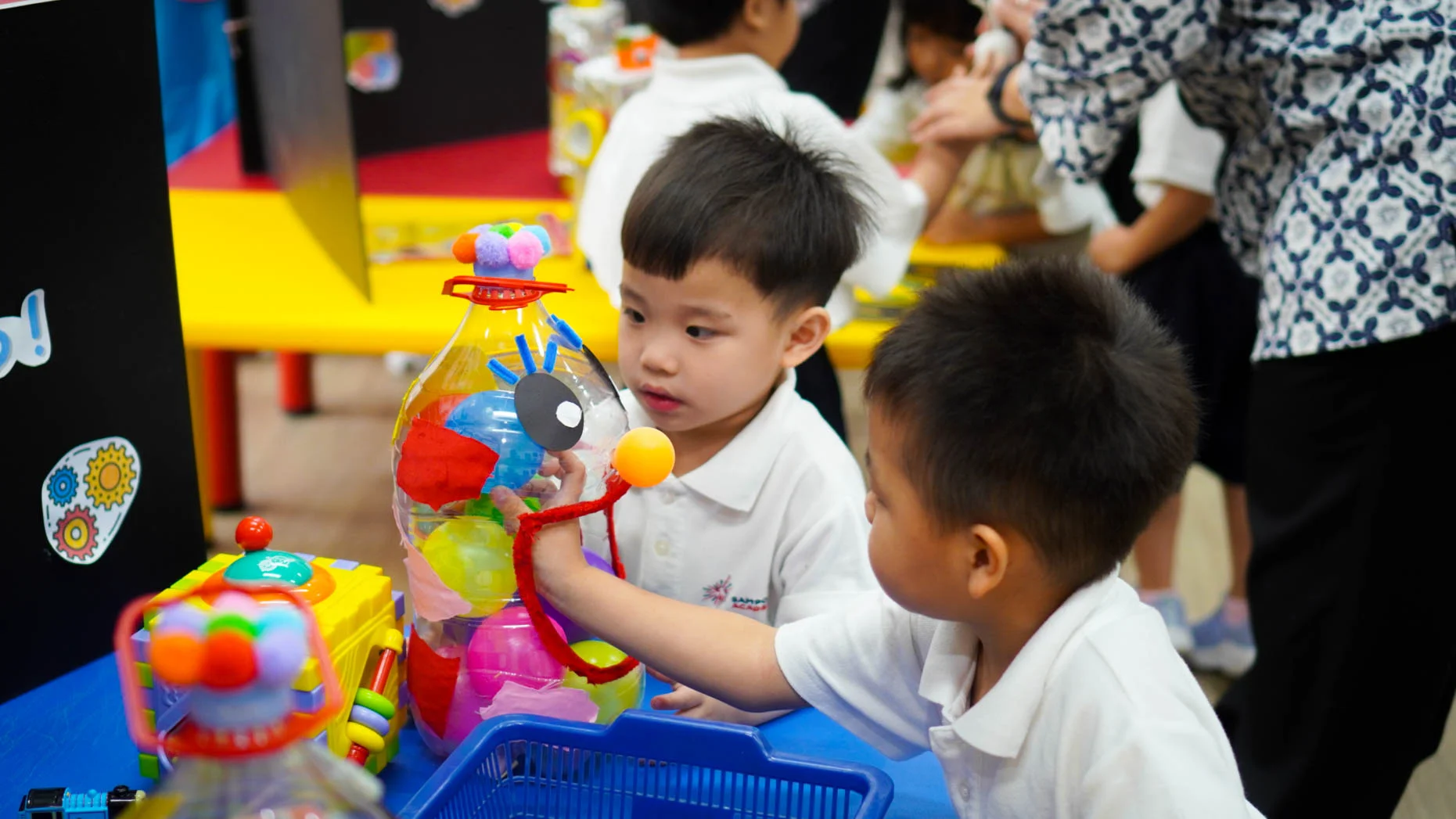Design thinking is a problem-solving approach that prioritizes empathy, creativity, and user-centricity. Design thinking for children is a process that empowers young minds to think creatively and develop problem-solving skills. It embraces their innate curiosity, imagination, and playful nature. This approach encourages children to empathize with others, understand their needs, and explore different perspectives.
Through hands-on activities, they engage in divergent thinking, generating a wide range of ideas without fear of judgment. Children learn to prototype their ideas using various materials, allowing them to bring their solutions to life. They test their prototypes, seek feedback, and iterate on their designs, fostering a growth mindset and resilience.
Design thinking for children promotes interdisciplinary learning, connecting various subjects and encouraging collaboration among peers. It celebrates their unique perspectives, creativity, and effort, empowering them to become innovative problem solvers who approach challenges with confidence and compassion.
Implementing this method in elementary schools can be a valuable way to foster creativity, problem-solving skills, and student collaboration.
 Start by providing professional development and training to teachers to familiarize them with design thinking principles and processes. Offer workshops, resources, and guidance on integrating design thinking into their lesson plans and activities.
Start by providing professional development and training to teachers to familiarize them with design thinking principles and processes. Offer workshops, resources, and guidance on integrating design thinking into their lesson plans and activities.
Below are eight steps to consider when introducing design thinking in elementary school settings:Read Also: 15 Signs of A Good Preschool and Early Childhood Programme
1. Educate teachers
 Start by providing professional development and training to teachers to familiarize them with design thinking principles and processes. Offer workshops, resources, and guidance on integrating design thinking into their lesson plans and activities.
Start by providing professional development and training to teachers to familiarize them with design thinking principles and processes. Offer workshops, resources, and guidance on integrating design thinking into their lesson plans and activities.
2. Create a supportive environment
Establish a classroom culture that encourages curiosity, experimentation, and risk-taking. Foster an environment where students feel safe to share ideas, make mistakes, and learn from failures. Encourage teamwork and collaboration to enhance the collective problem-solving abilities of the students.3. Define learning objectives
Align design thinking activities with specific learning objectives and curriculum standards. Identify subjects or topics where design thinking can be incorporated, such as science, social studies, or even art. Ensure that the design thinking process supports and enhances the curriculum's learning goals.4. Introduce empathy and observation
Teach students about empathy and the importance of understanding others' perspectives. Encourage students to observe and listen to the needs and experiences of others. Incorporate activities promoting empathy-building and active listening skills, such as interviews, role-playing, or community engagement.5. Scaffold the design thinking process
Break down the design thinking process into child-friendly steps. Simplify the terminology and guide students through each stage—empathize, define, ideate, prototype, and test. Use age-appropriate language, visuals, and examples to make the process more accessible to young learners.6. Incorporate hands-on activities
Design thinking thrives on hands-on, experiential learning. Introduce activities that involve problem-solving, creativity, and prototyping. For example, students can design and build models, create artwork, develop interactive presentations, or even develop simple apps or games. Provide various materials and resources for students to explore and experiment with.7. Encourage reflection and iteration
Emphasize the importance of reflection throughout the design thinking process. Help students analyze their prototypes and gather feedback from peers or potential users. Guide them in iterating and refining their designs based on the feedback received, encouraging a growth mindset and continuous improvement.8. Showcase and celebrate student work
Provide opportunities for students to showcase their design thinking projects and solutions. Organize exhibitions, presentations, or open houses where students can demonstrate their prototypes and share their design process with the school community, parents, or local stakeholders. By implementing design thinking in elementary schools, students can develop critical thinking, problem-solving, and empathy skills that will benefit them in various aspects of their lives. It nurtures a mindset of curiosity and resilience, preparing students to tackle real-world challenges creatively and collaboratively.Must Read: How Sampoerna Academy Teach Research Skills To Elementary Students


